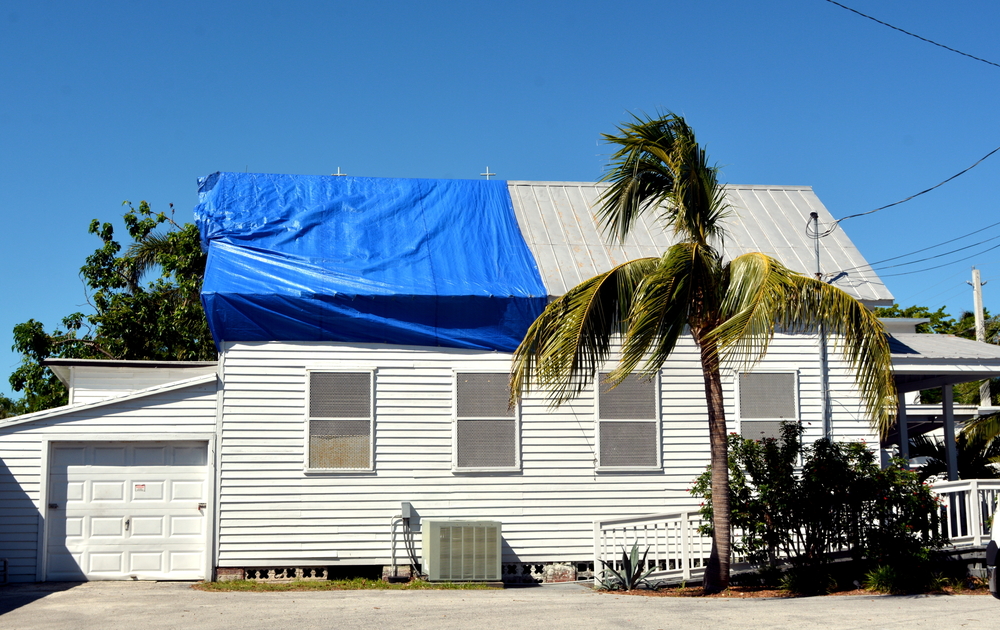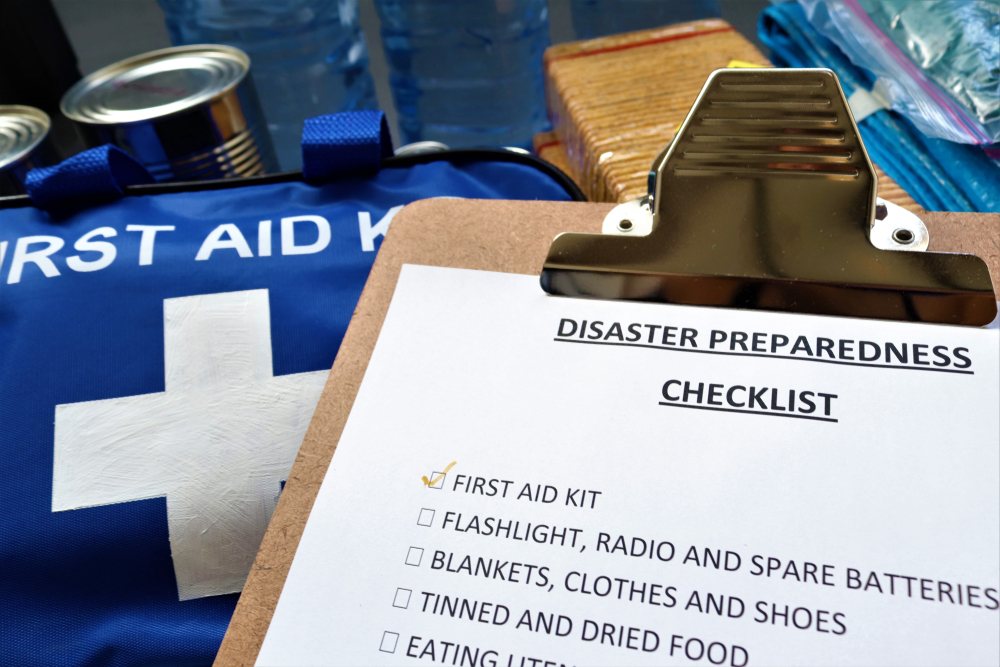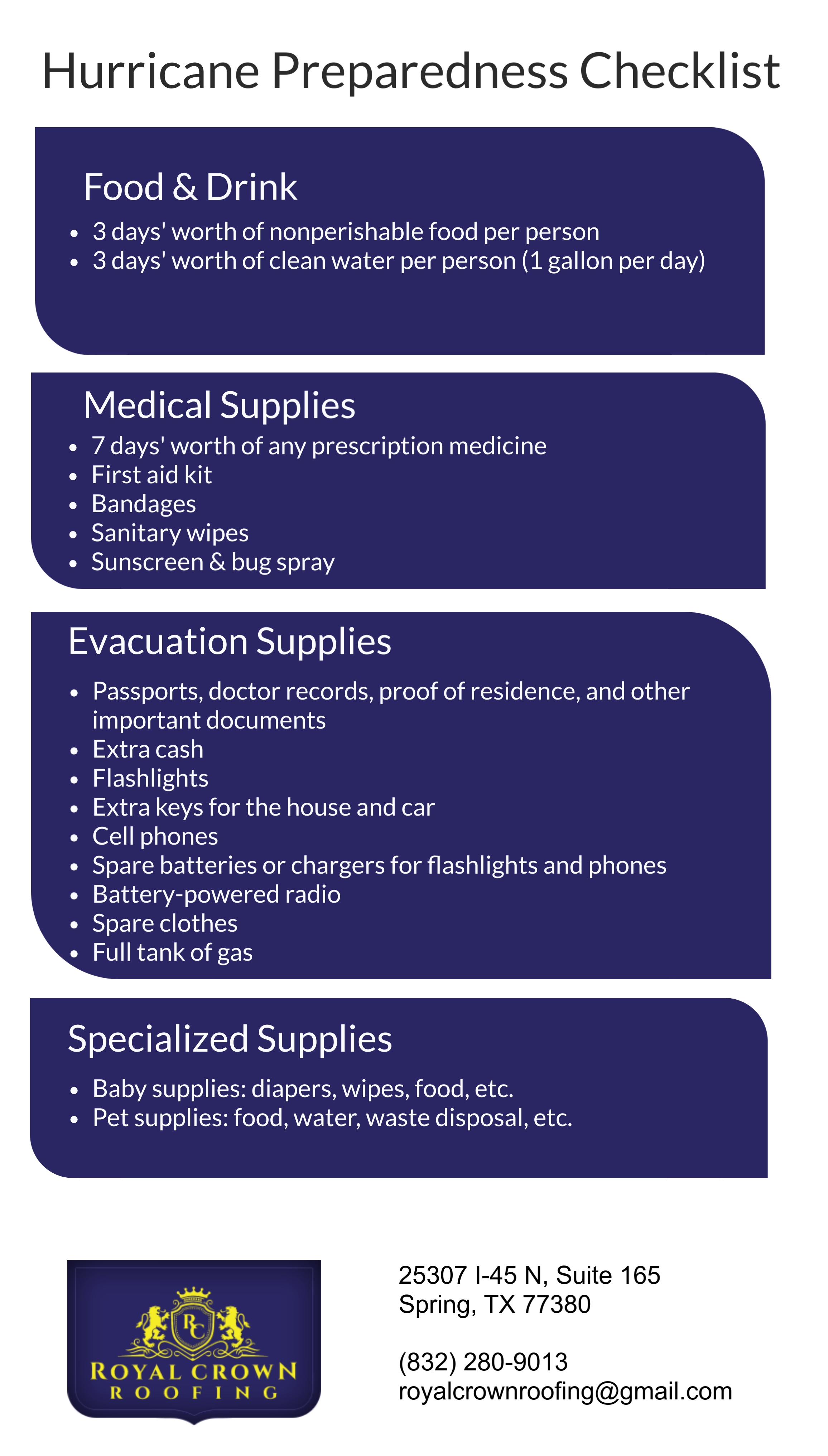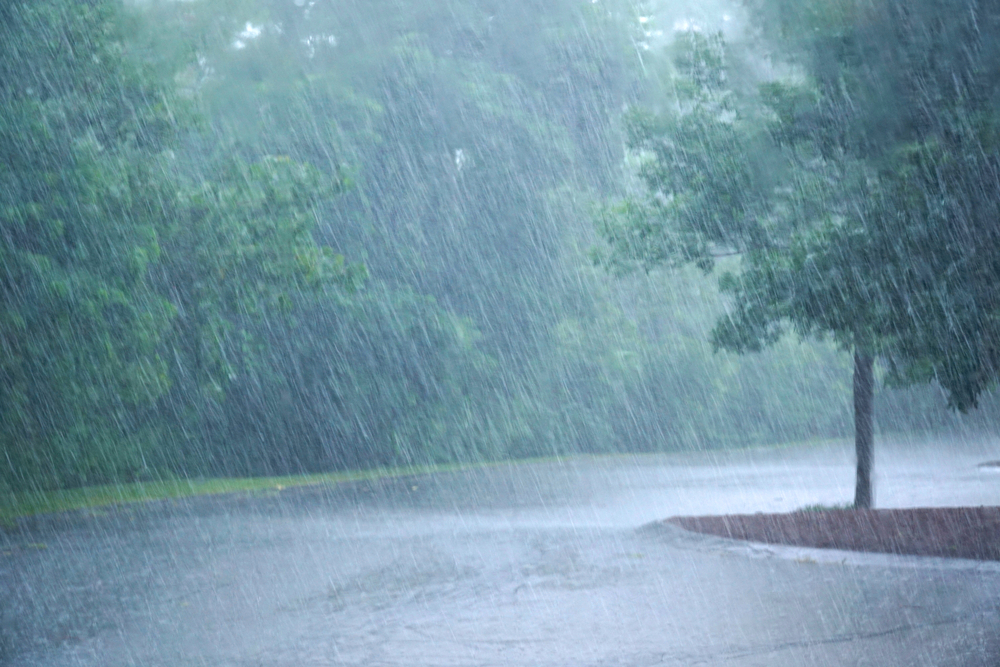
by siteadmin | Sep 20, 2019 | Emergency Preparations, Hurricane Preparation, Severe Weather
Once a hurricane has passed over your house, there’s almost certainly going to be some damage to deal with. Even a brand-new roof might have a few shingles missing here and there. However, not all hurricane damage is easily visible. Following a hurricane or severe weather, you should always inspect your roof yourself for any less obvious signs of damage.
Hurricane Roof Damage
Storm damage caused by a hurricane can leave some nasty marks on your house. However, don’t assume you got lucky if your house appears relatively untouched. A hurricane’s high winds and pounding rain can cause structural damage to your roof even if not one shingle is out of place. Here’s what to look for after a hurricane:
- Roof leaks
- Clogged gutters or downspouts
- Missing shingles
1) Roof Leaks
A hurricane can puncture holes in your roof from flying debris or cause damage to your home’s structural integrity. Even missing shingles can allow rain into your house. Since leaks may not be visible from the outside, begin by inspecting the inside of your roof. Are there any obvious holes or damages? Can you see any dark spots, indicating moisture is spreading?
Pro Tip: If you discover a leak on the inside of your roof, you can temporarily patch it with a tarp or other waterproof material until a professional can repair it.
2) Clogged Gutters or Downspouts
As you inspect your roof after a storm, don’t forget to check your gutters and downspouts as well. If you haven’t installed gutter guards or they’ve been damaged, you might find yourself dealing with pools of water on your roof that can cause collapses and expensive damage. Clean leaves or twigs out of your gutters to allow water to flow off freely and prevent this from happening.
3) Missing Shingles
Arguably the most common type of hurricane damage, missing tiles can lead to all sorts of problems with your roof. The most common issue, however, is leaking. A missing tile leaves a hole in your roof’s waterproof cover and can allow the rain inside. Your best bet to keep this damage in check is to temporarily install some extra shingles or other waterproof material on the outside of your roof to prevent further damage from occurring while you wait for repairs.
Protect Your Woodlands Home
Before the hurricane arrives, take as many preventive measures as you can to make sure your home stays protected from the high wind and rain that severe weather brings. If the hurricane passes and your home sustains some damage, the best thing you can do is arrange for repairs as quickly as possible. The faster you get the damages fixed, the less time things have to get worse and the sooner you can return to living in an undamaged house.
Connect with us for more tips on preparing for a hurricane.

by siteadmin | Sep 13, 2019 | Emergency Preparations, Roof Damage, Severe Weather
Hurricane season isn’t over until the end of November. As the National Weather Service tracks storms and keeps everyone updated, make sure that you and your family are ready to wait out any severe weather. If you decide not to evacuate or can’t evacuate, these emergency supplies may be all you have to go on for a while.
While you should always maintain a kit of emergency supplies, it’s particularly important to double-check that kit this time of year and replace items as necessary. Don’t let yourself get caught by surprise with an expired kit. Use this checklist to make sure you have everything you need and a plan for staying safe this hurricane season.

Food and Drink
Your disaster kit should contain a three-day supply of nonperishable food for each person in your home. Make sure it’s easy to open and prepare as well–for instance, opt for pull-tab tops on canned foods so you don’t have to worry about a can opener. Along with the food, make sure each family member has a three-day supply of clean water with at least one gallon per person per day set aside. Don’t substitute the water for other drinks like fruit juice or soda. While these drinks may taste better sometimes and last a while, because of their less beneficial nutritional content and the potential to increase thirst through high sugar content, they should be saved as a last resort.
Non-Edible Essentials
Of course, there are plenty of non-edible supplies you should include in your emergency kit. These include:
Medical Supplies
- 7-day supply of any prescription medicine your family needs
- Bandages
- Sanitary wipes
- First aid kit
- Sunscreen and bug spray
Evacuation Supplies
- Extra cash
- Copies of personal records: passports, proof of address, medical papers, etc.
- Family members’ contact info
- A full tank of gas
- Flashlights
- Hand-crank or battery-powered radio to monitor the weather
- Extra batteries
- Extra sets of keys for your house and car
- Cell phones and extra chargers and/or battery packs
- Spare clothes
Specialized Supplies
- Baby supplies: diapers, wipes, formula, etc.
- Pet supplies: food, carrier, leash, etc.
Pro Tip: Take before and after photos of your house to document any damage that may occur. Your insurance will appreciate it.
Before the Storm Hits
Keep your gas tank full and go down the checklist to see what supplies you may need. Keep an eye on the weather in the meantime. Prepare your home for severe weather by covering the windows, moving valuables inside, and any other steps you deem necessary. Most importantly, make sure your family knows the evacuation plan if it comes to that. Protect what’s really valuable.
Be Ready for Anything
Even the most advanced weather equipment is occasionally wrong. Sometimes, a hurricane projected to die at sea causes severe damage on land. We can never be completely sure what the weather might bring. The best we can do is make sure we’re ready to weather the storm.
Join the conversation for more ideas for your hurricane preparedness checklist.

by siteadmin | Aug 30, 2019 | Emergency Preparations, Severe Weather
As summer draws to a close, plenty of homeowners are looking forward to not dealing with severe summer thunderstorms as frequently. However, Houston isn’t completely out of the woods yet. Even if heavy rains later in the year don’t quite measure up to a summer downpour, you may still find yourself dealing with severe weather a little longer.
Preparing Your Home
Aside from the basics of gathering emergency supplies for yourself and your family, make sure to get your home ready for the abuse a severe thunderstorm is sure to dish out. Even if you’re confident your home can take it, it never hurts to be prepared. Use this checklist to inspect your house and protect vulnerable spots:
- Check your roof, outside and inside
- Clear your gutters
- Protect valuable outdoor items
- Check your windows and doors
1) Check Your Roof, Outside and Inside
If you don’t have time to get a free expert inspection, take a few minutes to examine your roof yourself. Any signs of a leak on the inside or outside of your roof should be covered immediately with a tarp and repaired as soon as the rain stops. Don’t let your home or belongings be damaged even by the possibility of a leak.
2) Clear Your Gutters
Gutters notoriously fill with leaves, twigs, and other debris over time, making it difficult for them to effectively drain your roof. For a long-term solution, considering installing gutter guards to prevent clogging. If you don’t have gutter guards yet, quickly check to ensure the gutters are clear and clean them out before the storm hits.
Pro Tip: If rainwater can’t drain properly off your roof, it weighs down in puddles and can cause leaks or collapsing. That’s why it’s so important to keep your gutters clean.
3) Protect Valuable Outdoor Items
Most homeowners have a few belongings they keep outside, such as grills, bicycles, or outdoor furniture. However, even water-resistant items will sustain some damage in a severe downpour. Bring everything inside before the storm hits to keep your outdoor valuables safe.
4) Check Your Windows and Doors
Finally, remember that your roof isn’t the only part of your house that can leak. Make sure the seals around your windows and doors are still secure and doing their job. If you find a leak, cover it temporarily with a waterproof protector until you can repair it later.
Protecting Your Conroe Home
In areas prone to severe weather and heavy rain, houses are built to endure the storms. However, every house has its flaws, especially as time passes and the original construction loses some of its strength. The best thing you can do as you prepare for heavy rain is to take a few extra steps to protect your home from severe damage through periodic inspections and maintenance.
Connect with us to learn more about preparing your home for the last bit of severe summer weather.







